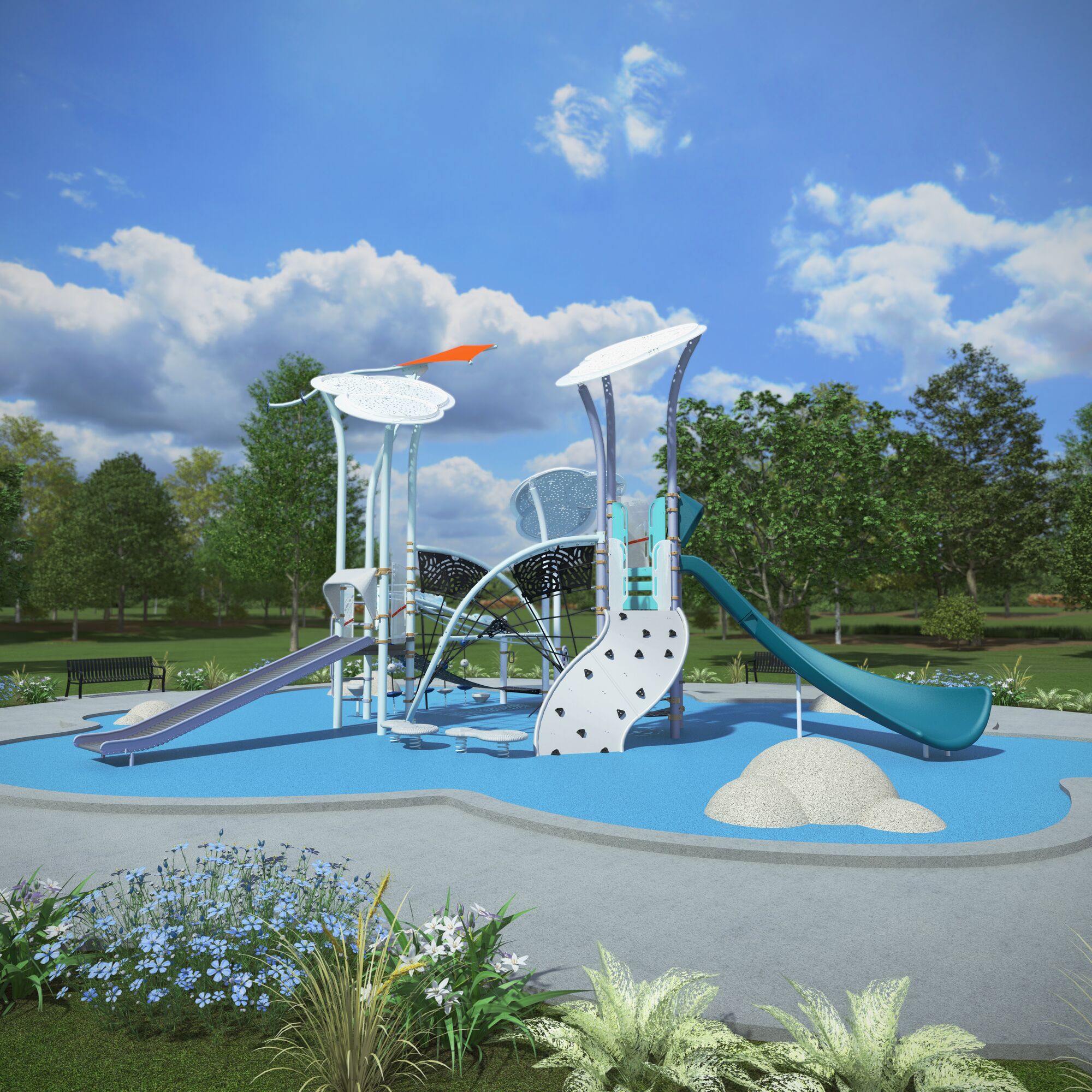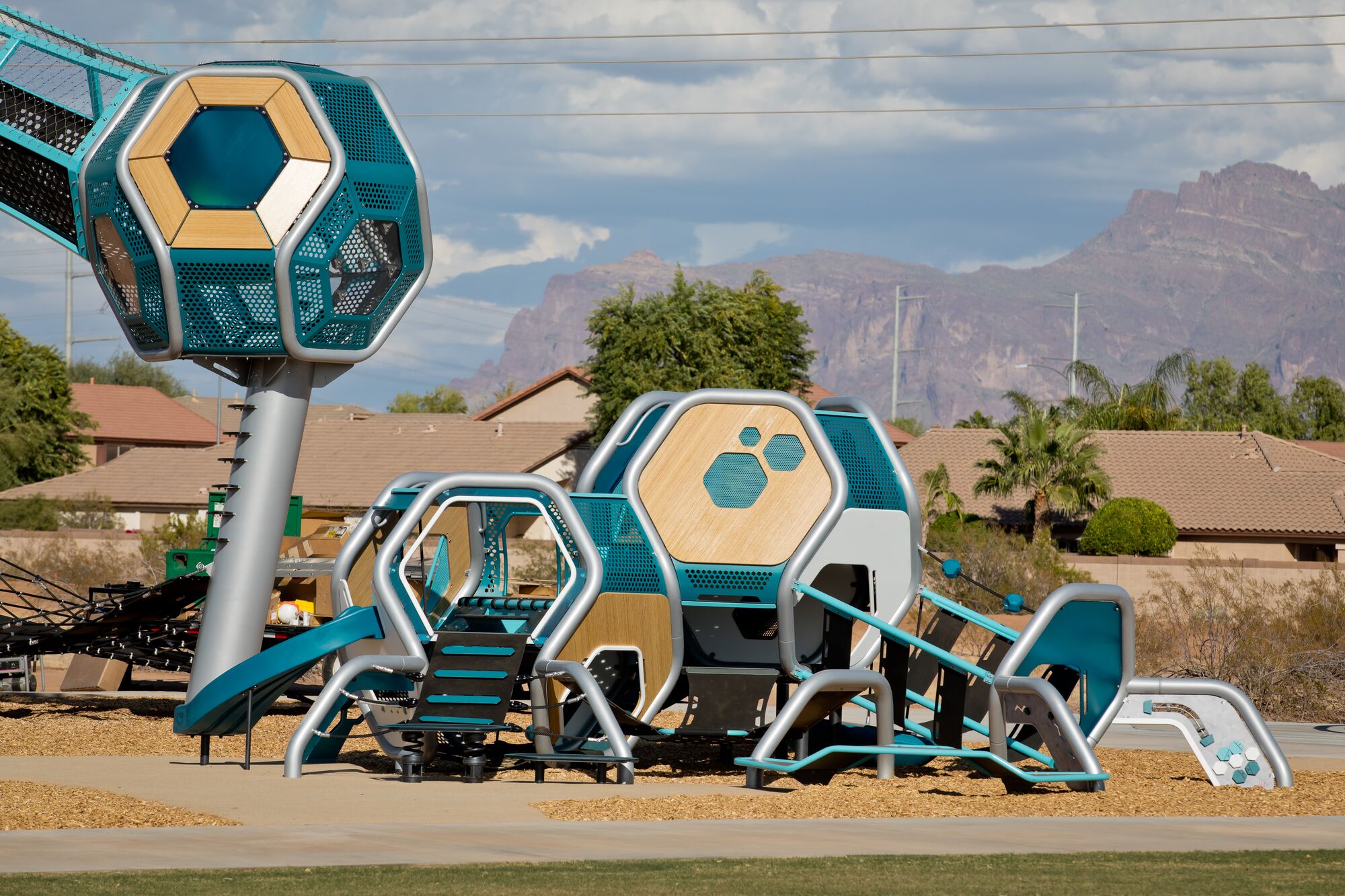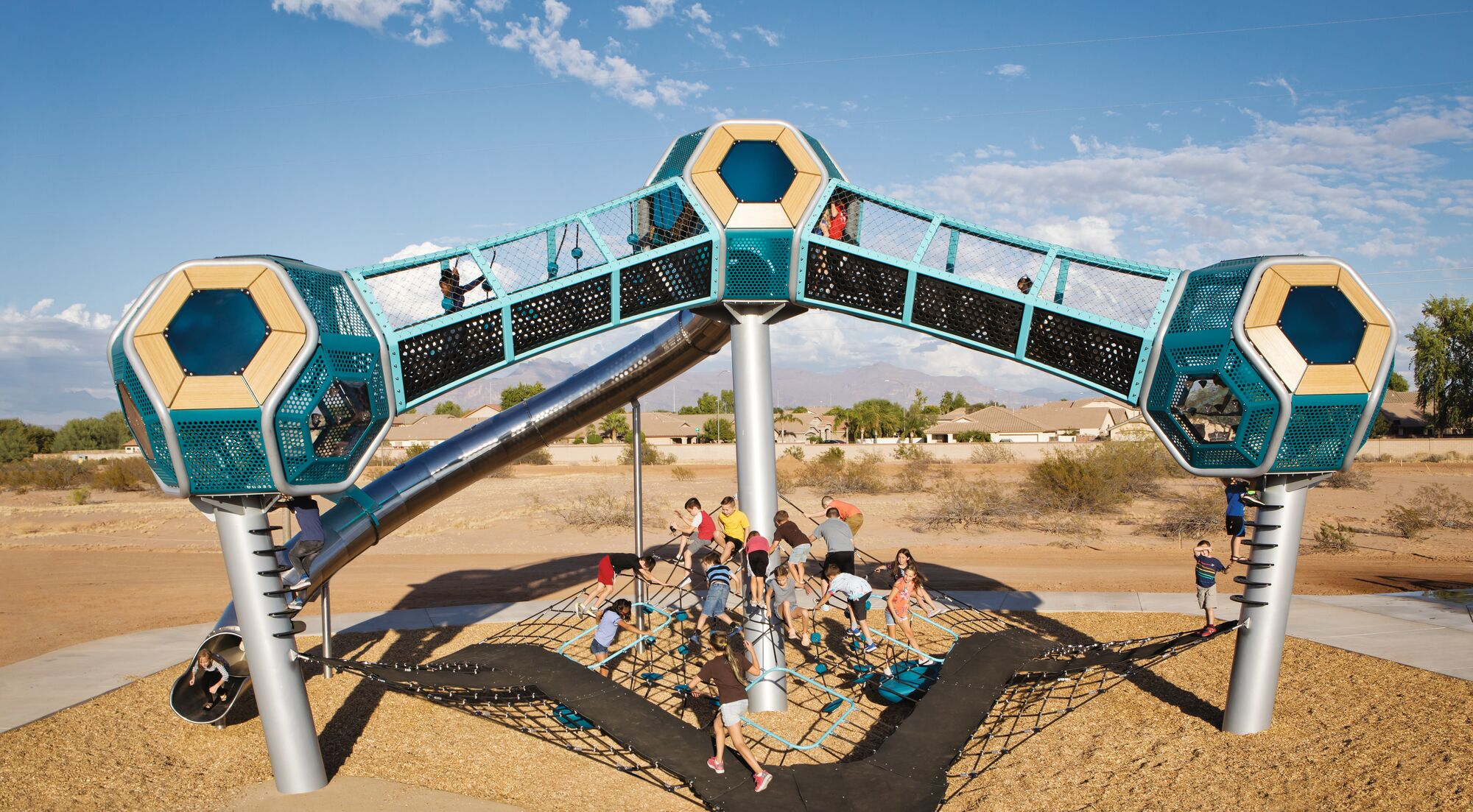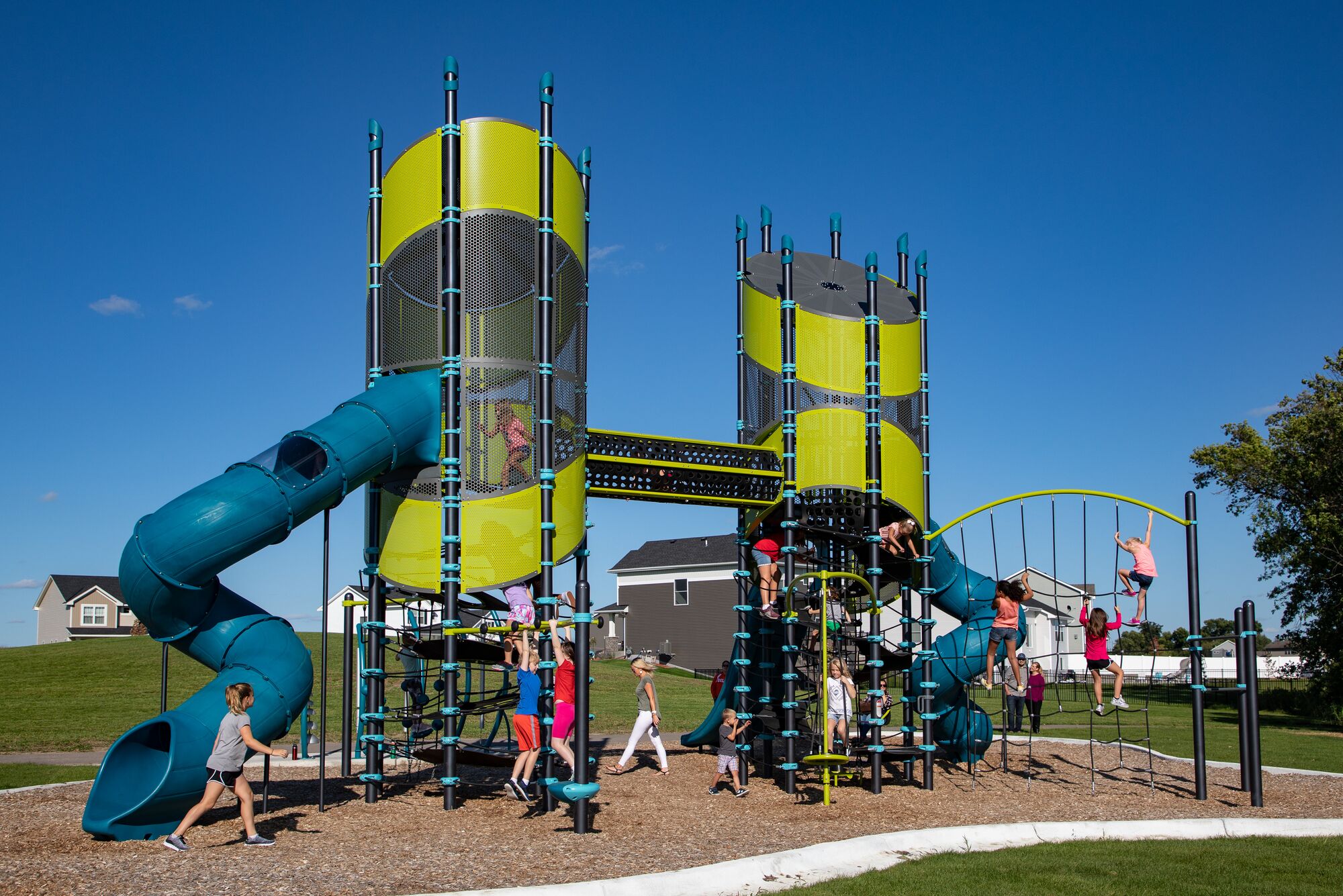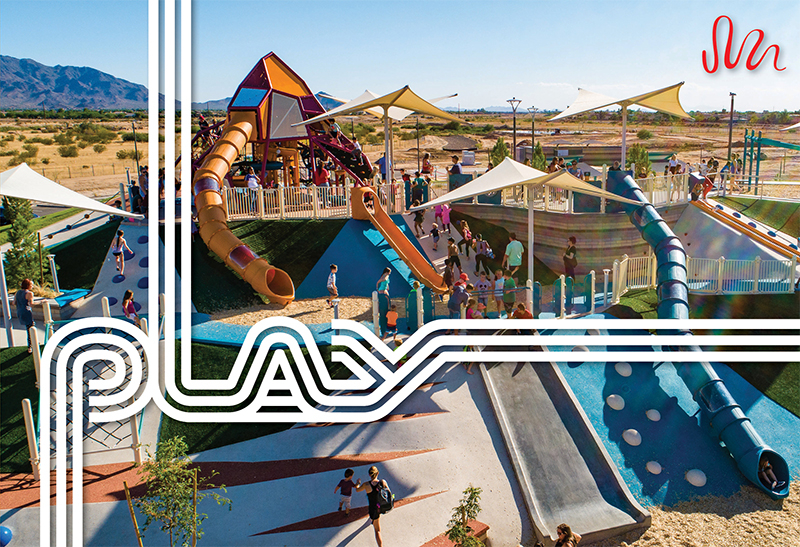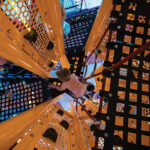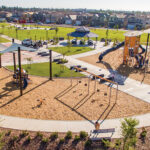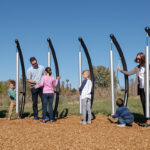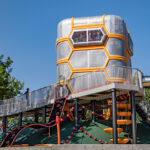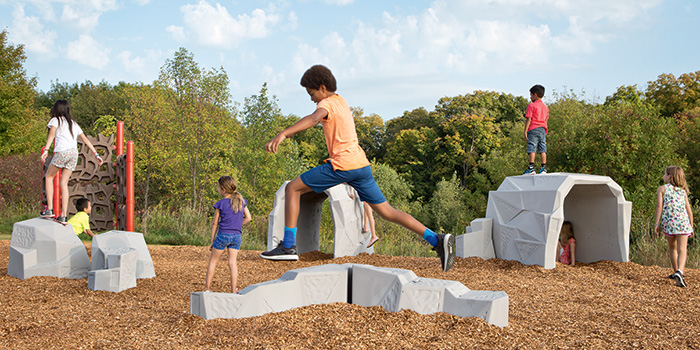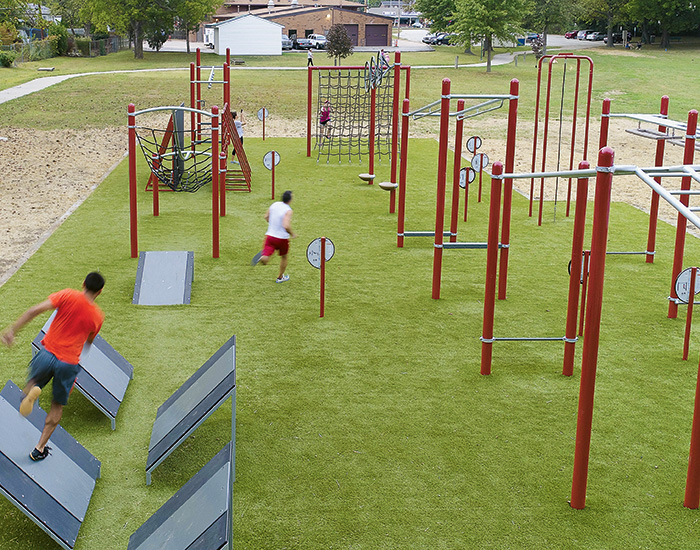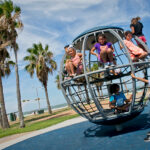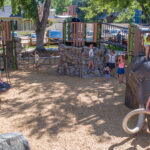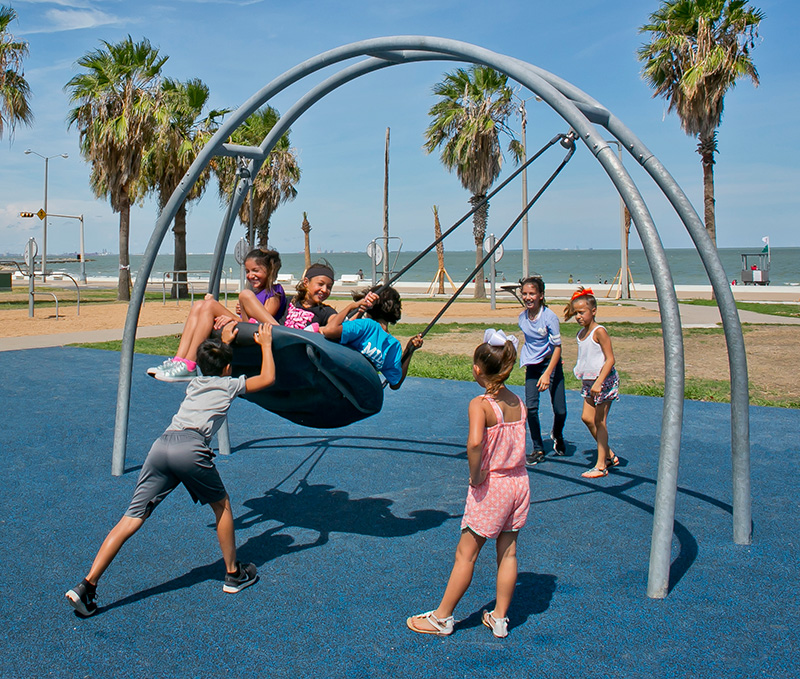If you’re looking for innovative playground designs at affordable price points, you’ve come to the right place. Our design experts have curated a collection of preconfigured playground structures that are perfect for your community park or school playground! Our Smart Play® family of playstructures not only fit in a compact space, but they are packed with activities to help kids develop key sensory, motor, cognitive and social skills. Choose one or pair the affordable Smart Play playground designs together to create a whimsical play experience.
Smart Play Billows™ Imaginations will soar as kids ages 5 to 12 float across the sky on bridges, climbers and down two sensory-rich slides.
Smart Play Breeze™ Kids ages 2 to 5 will find plenty of airy insights to explore as they crawl, walk and climb up to the hot-air balloon basket.
Smart Play Tree Tops™ Give kids the sense of playing in the treetops as they navigate wiggly bridges, the 3-ring climber, roar down two slides and much more.
Smart Play Sprig™ Encourage kids ages 2 to 5 to explore leafy pods and flower blossoms while they flex their emerging skills on this fresh-as-spring playstructure.
Smart Play BeachComber™ Young imaginations are encouraged to go with the watery flow as they surge forth to explore oceans of activity.
Help create memories for kids in your community to look back on with these affordable Smart Play playground designs. Learn more about this family of playstructures and contact your local Landscape Structures playground consultant to get started on your playground design today.


